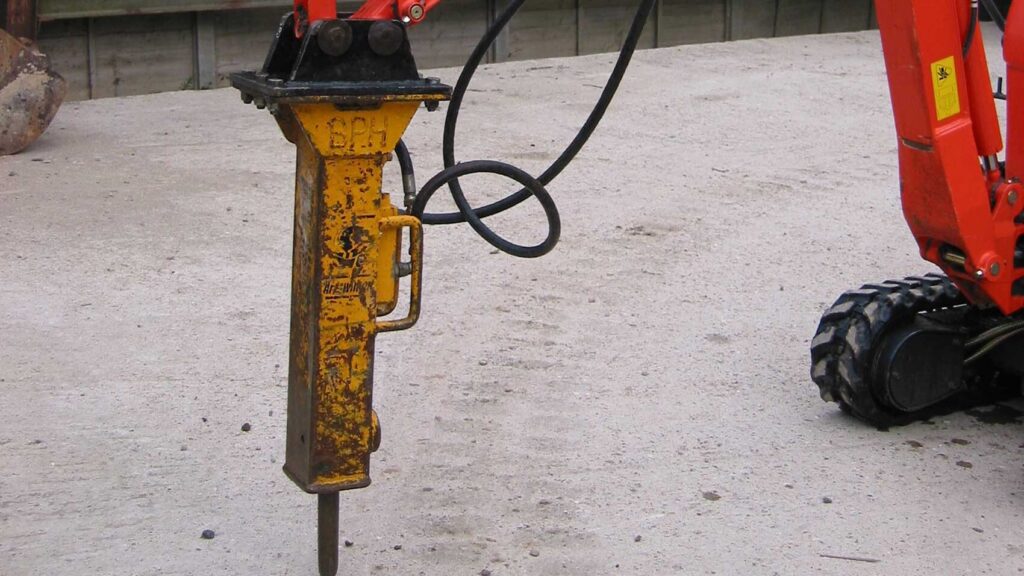Choosing the right mini digger attachment for your project can make a huge difference to the efficiency, cost and quality of your work. With the right tools, your mini digger becomes a highly versatile piece of equipment, capable of digging trenches, clearing land, breaking concrete or boring precise holes. At Central Plant Hire, we help clients across West Sussex and the South East get more from their machinery by matching the right attachment to the job.

If you’ve ever been halfway through a job and realised your equipment is holding you back, you’ll understand how vital it is to use the correct tools. When it comes to plant hire, the most common mistake we see is people underestimating the impact of the attachments they use.
Understanding how to choose the right mini digger attachment for your project helps avoid wasted time, reduces wear on your equipment and produces cleaner, more professional results. Every job has different needs, and one bucket or tool does not suit all.
Most hire packages include a standard digging bucket. These come in a variety of sizes and are designed for general-purpose excavation. From small garden projects to large-scale foundations, a digging bucket is the go-to attachment for many users.
When deciding how to choose the right mini digger attachment for your project, the size and shape of the bucket can have a big impact. A larger bucket moves more soil quickly, but can be difficult to manoeuvre in tight spaces. A narrower bucket may be more precise, especially in restricted areas or when working around obstacles.
If you need to prepare an area for turf or hardscaping, a grading bucket is often the ideal tool. These are wide and shallow, allowing you to level out ground or spread materials more efficiently. Landscapers rely on them for that final, clean finish that makes a job stand out.
Trenching buckets, on the other hand, are narrower and deeper. These are perfect for installing pipes, cables or drainage. If you are considering how to choose the right mini digger attachment for your project and need long, narrow cuts in the ground, a trenching bucket will always outperform a general-purpose tool.
For tasks that involve drilling into the ground, such as planting trees or installing fence posts, an auger can be a game changer. It allows you to bore deep, straight holes quickly and accurately. This is especially useful on repetitive jobs, saving time and effort.
When dealing with hard surfaces like concrete or tarmac, a hydraulic breaker is the tool you need. These high-powered attachments make demolition work much easier. Just be sure your mini digger has the right hydraulic capacity to power it effectively. Choosing the wrong attachment could lead to delays or costly damage, another reason why it’s important to understand how to choose the right mini digger attachment for your project.

Rippers are designed for breaking through hard or compacted soil. They’re often used on old or frozen ground, where a regular bucket would struggle. Ripping the ground first makes digging smoother and less damaging to your equipment.
If your job involves moving large pieces of waste, tree trunks or construction materials, a grapple attachment is worth considering. It works like a claw, allowing you to lift and shift awkward items with ease. Many of our customers working on clearance projects find this saves both time and physical effort.
Before you begin any hire, take the time to review the job. Think about what you need to achieve, what kind of ground you’re working with, and whether the project involves multiple stages. This will help guide your decision on attachments.
Machine compatibility is also key. Not all diggers can handle every tool, especially hydraulic-powered attachments like breakers or augers. When in doubt, ask your supplier for advice. At Central Plant Hire, we take the time to understand your job and help you choose a safe, effective setup.
If your project requires frequent tool changes, a quick coupler can also make your life easier. This lets you switch attachments in minutes, without needing additional tools or manual adjustments.
Unless you’re using a specific attachment regularly, hiring is usually the better option. You save on upfront costs, avoid maintenance and don’t need to worry about storage. It also gives you access to a wider range of tools without the long-term commitment.
This is especially useful when learning how to choose the right mini digger attachment for your project. Hiring gives you the flexibility to try different tools and adapt to changing site needs, all while keeping your budget in check.
We recently worked with a contractor installing hundreds of fence posts in rural Sussex. By combining a mini digger with an auger and post driver, they completed the job in record time and with far less physical effort.
Another client used a trenching bucket to lay utility lines across a commercial site. Their accuracy and speed improved dramatically, compared to when they previously attempted the same task with a standard bucket. These examples highlight how choosing the right attachment can improve productivity and results.

Knowing how to choose the right mini digger attachment for your project comes with experience. If you’re unsure which tool to use, speak to our team. We provide expert guidance, reliable equipment and fast delivery throughout West Sussex and the surrounding areas.
If you would like some advise or if you’re still unsure on which machine and accessories you require, contact us at Central Plant Hire to speak to us and get a quote tailored to your needs! We are dedicated to providing not only top-quality machinery but also the resources you need to operate them safely and effectively. We stock a range of modern, low-emission diggers and dumpers. Most models include auto-idle or ECO modes, and selected machines are fitted with CareTrack telematics, just ask our hire desk for access. Get in touch with Central Plant Hire at 01293 851 320 or via email at hire@centralplanthire.co.uk.